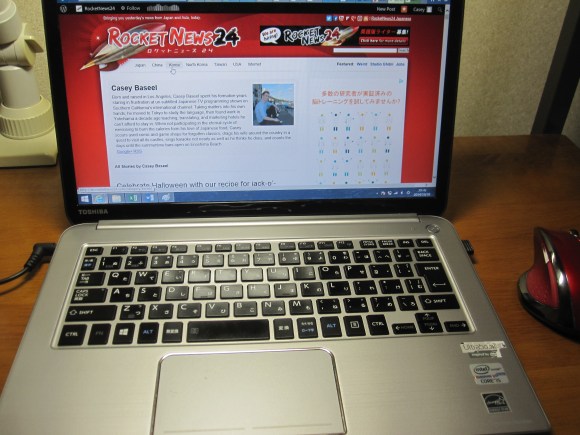For a large chunk of Japan’s history, there wasn’t much time to think about the future. Instead, most people’s days were filled with more immediate concerns, like trying to figure out how to survive the civil wars that were all the rage in the country during most of the 14th, 15th, and 16th centuries.
Things finally settled down in the early 1600s, though, and ordinary Japanese citizens entered into a long period of internal stability. Finally having enough time to muse about things to come, they came up with a list of predictions about Japan’s future, some of which are nowhere near how reality has turned out, and some of which were spot on.
The first batch of predictions comes from the Edo Period, which began in 1603 as the Tokugawa shogunate took control of Japan.
1. The fashion of young people, with loose-fitting kimono and incredibly long topknots, will be unimaginably avant-garde.
Kimono and topknots haven’t changed so much as disappeared, although the former have experienced something of a renaissance among young people in recent years. Still, Japanese fashion has shown a steady trend towards less formal clothing in non-work settings, and a walk through one of Tokyo’s trendier neighborhoods is always bound to turn up at least a few flamboyantly funky ensembles.
2. Getting your hands on fresh, in-season bonito will become difficult, with the price of one fish rising to the present-day equivalent of several million yen (tens of thousands of US dollars).
Thankfully for seafood fans, this hasn’t come to pass. In the Edo Period, a whole bonito would cost you, converted into modern currency terms, about 200,000 yen ($1,855). These days, the going price for an average-sized 8-kilogram (17.6-pound) bonito is about 18,000 yen ($170). So while shortages are driving up the price of some foodstuffs in Japan, like unagi (freshwater eel), you’re still living in a good time if you love bonito.
3. Women will have a higher social status, and be able to use their money to buy men.
They may not be able to buy them outright, but just about every major city in Japan now has host clubs where women can at least rent a man’s company for a few hours. Plus, as we recently pointed out, there are a number of ways women in Japan enjoy a position of power.
4. The aging society will cause red light districts to be overrun with the elderly.
Things haven’t gotten to this point yet, but it’s worth noting that some researchers predict that by 2050, more than half of Japan’s population will be over 50 years old. And while some seniors are likely to see their lusty urges fade as they age, others will figure they’re now old enough to be as pervy as they want to be, and it’s only natural that businesses in the skin trade will cater to this growing demographic. After all, we’ve already seen the opening salvo of grannies taking over as the starring characters in girl-rearing video games.
That wraps up the list of expectations from the Edo Era, which came to a close in 1868. However, the people of the Meiji Era, which came next, had their own set of predictions.
5. You’ll be able to talk to friends overseas using a wireless telephone
Everyone with a cell or smartphone knows this came true.
6. Wild beasts will be extinct.
The vagueness of the Japanese language makes judging the accuracy of this prediction tricky. The way it’s phrased in Japanese makes it impossible to tell if they were referring to one species, some species, or all species. We’re giving partial credit for it, since in the time since the Meiji Period started, we have lost some of our animal friends to extinction, and the amount of contact we have with “beasts” in our daily life has become small enough that a couple of meerkats can draw a crowd just by showing up on the streets of Tokyo.
7. The Sahara Desert will be cultivated, and Asia and Africa will become major centers of civilization.
Asian and African nations have indeed seen a considerable rise in their economic and political power since the early 19th century. The Sahara is still a desert, though.
8. You’ll be able to circumnavigate the world in seven days
In the age of commercial jet air travel, if it takes you seven days to get around the globe, I hope you got a great deal on the tickets, because that is one crazily indirect route you’re flying.
9 Military air forces and air fortresses will come into being
We may not have any floating castles, but yes, the age of commercial jet air travel is also the age of military air combat.
10. Mosquitos and fleas will no longer exist
We’re sure the fact that we still have both has some sort of great importance to the interconnected web of life on planet Earth. Doesn’t make us itch any less when we get bitten, though, or our dogs any more compliant when it’s time for a flea bath.
11. Without leaving home, you’ll be able to obtain colored photographs of places far away.
Coming to the very end of the list, it’s funny to see just how rapidly technology has changed the scale of expectations. The Meiji Period ended in 1912, when even producing a color photo to begin with was a difficult and expensive process. Now though?
▼ Bam – picture (in color!) of my desk in Yokohama, viewable by anyone in the world with an Internet connection.
Color photos? Heck, we’ve got text and videos, too, giving us everything from the news, directions to anywhere you want to go, or recipes for anything we want to cook.
▼ Want to learn how to make some Jack-‘o-lantern steamed buns? Here you go.
So while some might pine for Japan’s kimono-filled past, or feel trepidation about its horny octogenarian-packed future, the present is still pretty awesome.
Source: Naver Matome
Insert images: RocketNews24




 Exhibition on the 1,500 year-history of traditional Japanese women’s clothing to open in Shibuya
Exhibition on the 1,500 year-history of traditional Japanese women’s clothing to open in Shibuya New app lets you traverse the streets of modern Tokyo and ancient Edo at the same time
New app lets you traverse the streets of modern Tokyo and ancient Edo at the same time Japanese politicians submit bill to lower legal adulthood age, raise marriage age for women
Japanese politicians submit bill to lower legal adulthood age, raise marriage age for women Japanese capital to move from Tokyo to Okayama…according to a “time-travelling” Twitter user
Japanese capital to move from Tokyo to Okayama…according to a “time-travelling” Twitter user Embrace the literary and the historical with traditional Japanese artwork as your Zoom background
Embrace the literary and the historical with traditional Japanese artwork as your Zoom background McDonald’s new Happy Meals offer up cute and practical Sanrio lifestyle goods
McDonald’s new Happy Meals offer up cute and practical Sanrio lifestyle goods All-you-can-drink Starbucks and amazing views part of Tokyo’s new 170 meter-high sky lounge
All-you-can-drink Starbucks and amazing views part of Tokyo’s new 170 meter-high sky lounge Studio Ghibli glasses cases let anime characters keep an eye on your spectacles
Studio Ghibli glasses cases let anime characters keep an eye on your spectacles More foreign tourists than ever before in history visited Japan last month
More foreign tourists than ever before in history visited Japan last month Kyoto’s 100 Demons yokai monster parade returns!
Kyoto’s 100 Demons yokai monster parade returns! Mister Donut ready to make hojicha dreams come true in latest collab with Kyoto tea merchant
Mister Donut ready to make hojicha dreams come true in latest collab with Kyoto tea merchant Super Nintendo World expansion gets delayed for several months at Universal Studios Japan
Super Nintendo World expansion gets delayed for several months at Universal Studios Japan Kyushu-exclusive Black Mont Blanc goes nationwide in a “Special” way
Kyushu-exclusive Black Mont Blanc goes nationwide in a “Special” way Masahiko Ozumi Paris in Osaka makes the comfiest desserts around
Masahiko Ozumi Paris in Osaka makes the comfiest desserts around Beautiful Sailor Moon manhole cover coasters being given out for free by Tokyo tourist center
Beautiful Sailor Moon manhole cover coasters being given out for free by Tokyo tourist center Disney princesses get official manga makeovers for Manga Princess Cafe opening in Tokyo
Disney princesses get official manga makeovers for Manga Princess Cafe opening in Tokyo Starbucks reopens at Shibuya Scramble Crossing with new look and design concept
Starbucks reopens at Shibuya Scramble Crossing with new look and design concept Beautiful new Final Fantasy T-shirt collection on the way from Uniqlo【Photos】
Beautiful new Final Fantasy T-shirt collection on the way from Uniqlo【Photos】 Is the new Shinkansen Train Desk ticket worth it?
Is the new Shinkansen Train Desk ticket worth it? Foreign English teachers in Japan pick their favorite Japanese-language phrases【Survey】
Foreign English teachers in Japan pick their favorite Japanese-language phrases【Survey】 Japanese convenience store packs a whole bento into an onigiri rice ball
Japanese convenience store packs a whole bento into an onigiri rice ball We try out “Chan Ramen”, an underground type of ramen popular in the ramen community
We try out “Chan Ramen”, an underground type of ramen popular in the ramen community Studio Ghibli releases Kiki’s Delivery Service chocolate cake pouches in Japan
Studio Ghibli releases Kiki’s Delivery Service chocolate cake pouches in Japan Japan’s bone-breaking and record-breaking roller coaster is permanently shutting down
Japan’s bone-breaking and record-breaking roller coaster is permanently shutting down New definition of “Japanese whiskey” goes into effect to prevent fakes from fooling overseas buyers
New definition of “Japanese whiskey” goes into effect to prevent fakes from fooling overseas buyers Our Japanese reporter visits Costco in the U.S., finds super American and very Japanese things
Our Japanese reporter visits Costco in the U.S., finds super American and very Japanese things Studio Ghibli unveils Mother’s Day gift set that captures the love in My Neighbour Totoro
Studio Ghibli unveils Mother’s Day gift set that captures the love in My Neighbour Totoro Foreign passenger shoves conductor on one of the last full runs for Japan’s Thunderbird train
Foreign passenger shoves conductor on one of the last full runs for Japan’s Thunderbird train Domino’s Japan now sells…pizza ears?
Domino’s Japan now sells…pizza ears? New Japanese KitKat flavour stars Sanrio characters, including Hello Kitty
New Japanese KitKat flavour stars Sanrio characters, including Hello Kitty Kyoto creates new for-tourist buses to address overtourism with higher prices, faster rides
Kyoto creates new for-tourist buses to address overtourism with higher prices, faster rides Sales of Japan’s most convenient train ticket/shopping payment cards suspended indefinitely
Sales of Japan’s most convenient train ticket/shopping payment cards suspended indefinitely Sold-out Studio Ghibli desktop humidifiers are back so Totoro can help you through the dry season
Sold-out Studio Ghibli desktop humidifiers are back so Totoro can help you through the dry season Japanese government to make first change to romanization spelling rules since the 1950s
Japanese government to make first change to romanization spelling rules since the 1950s Ghibli founders Toshio Suzuki and Hayao Miyazaki contribute to Japanese whisky Totoro label design
Ghibli founders Toshio Suzuki and Hayao Miyazaki contribute to Japanese whisky Totoro label design Doraemon found buried at sea as scene from 1993 anime becomes real life【Photos】
Doraemon found buried at sea as scene from 1993 anime becomes real life【Photos】 Tokyo’s most famous Starbucks is closed
Tokyo’s most famous Starbucks is closed One Piece characters’ nationalities revealed, but fans have mixed opinions
One Piece characters’ nationalities revealed, but fans have mixed opinions We asked a Uniqlo employee what four things we should buy and their suggestions didn’t disappoint
We asked a Uniqlo employee what four things we should buy and their suggestions didn’t disappoint Princesses, fruits, and blacksmiths: Study reveals the 30 most unusual family names in Japan
Princesses, fruits, and blacksmiths: Study reveals the 30 most unusual family names in Japan This hotel has one of the coolest katana collections in Japan, and admission is totally free【Pics】
This hotel has one of the coolest katana collections in Japan, and admission is totally free【Pics】 Japan: one of the few countries in the world where married couples must have the same surname
Japan: one of the few countries in the world where married couples must have the same surname Gunkanjima and 22 sites of Japan Meiji Industrial Revolution up for World Heritage award
Gunkanjima and 22 sites of Japan Meiji Industrial Revolution up for World Heritage award Can you catch Pokémon GO Pokémon in the Sahara Desert? We head to North Africa and find out
Can you catch Pokémon GO Pokémon in the Sahara Desert? We head to North Africa and find out Bones of over 1,500 people found at Osaka Station area construction site
Bones of over 1,500 people found at Osaka Station area construction site Population aging in Japan gets a corona-boost as pregnancies drop by 11 percent this year
Population aging in Japan gets a corona-boost as pregnancies drop by 11 percent this year 16-year-old Japanese girls will no longer be allowed to marry, age of legal adulthood moves to 18
16-year-old Japanese girls will no longer be allowed to marry, age of legal adulthood moves to 18 Samurai Studio: Tokyo’s new photo studio where you can get your picture taken in samurai armor
Samurai Studio: Tokyo’s new photo studio where you can get your picture taken in samurai armor Working like a dog – Old-timey Japanese invention planned to turn pooch power into butter
Working like a dog – Old-timey Japanese invention planned to turn pooch power into butter Cat lovers can now put a canned ring on it with new line of capsule toys
Cat lovers can now put a canned ring on it with new line of capsule toys Survey asks which country’s fashion is the most influential in Japanese street style
Survey asks which country’s fashion is the most influential in Japanese street style Cherry blossom forecast 2021 released! Sakura set to bloom early in Tokyo again this year
Cherry blossom forecast 2021 released! Sakura set to bloom early in Tokyo again this year Revealed! Japan’s top 10 handsome samurai【Photos】
Revealed! Japan’s top 10 handsome samurai【Photos】 Fight like a ninja in a samurai town, with sword-fighting experience at Kyoto Toei movie studio park
Fight like a ninja in a samurai town, with sword-fighting experience at Kyoto Toei movie studio park Japan reports fewer children and more elderly people for 35th year in a row
Japan reports fewer children and more elderly people for 35th year in a row
Leave a Reply